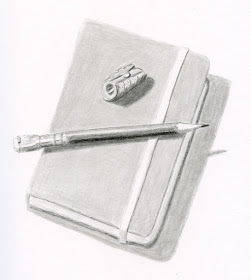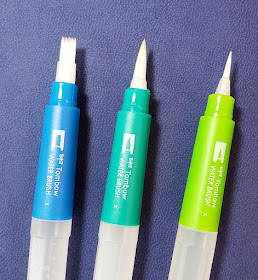 |
| 6/6/19 colored pencil |
The essay, republished below, is a compilation of thoughts and reflections I’ve
already published here on my blog, so if you’ve been a regular reader for a
while, not much will be new to you. But if you’ve joined me only recently, it
serves as the “back story” of how I got here and why I keep doing what I do.
Lifestyle Sketcher
Urban sketching: It’s not a hobby; it’s a lifestyle. That’s the subtitle of my blog, Fueled by Clouds & Coffee,
where I have been sharing and writing about my sketches since 2012. A hobby can
be defined as “an activity or interest pursued for pleasure or relaxation.”
While urban sketching certainly provides both pleasure and relaxation, I don’t
think of it as a hobby. I think of it more as a way of life – something that
has become such a normal part of my everyday that it shapes how I view the
world.
I haven’t always had this world view. For most of my life I had the
fear of drawing as well as the desire to draw. Yet every time I tried to learn
by reading how-to books, I became bored practicing cubes and spheres and would
eventually quit. Then, in 2011, I discovered Urban Sketchers, a worldwide
network of thousands with a common passion to “show the world, one drawing at a
time.” They weren’t sitting in studios drawing nude models, vases, or cubes – they were hitting the streets of their cities. And unlike plein air
painters carrying fifty pounds of equipment, they were going out with a simple
sketchbook and a pencil or a pen in their pockets. Viewing the sketches they
shared online, I was inspired by the mundane beauty of their everyday subjects
as well as the simplicity of their tools.
 |
| 6/7/19 graphite |
With portable art supplies carried with me at all times, even when
I’m just running errands, I am ready to capture whatever might fill five
minutes or a half-hour of my ordinary day. A trash can, an abandoned couch, a
fellow bus commuter, or a coffee shop patron – they’re all fair game. I don’t
let the cold-and-wet-weather months (many of which we have in Seattle) keep me
from sketching. I just do it from inside my car.
I remember the exact moment I became a lifestyle sketcher. When I
first started out, I had prepared a special bag full of tools, materials and
sketchbooks. This “sketch kit” lived on the floor next to my everyday-carry
bag. When I thought I might be “inspired” to sketch, I would grab the kit and
go out.
The more I sketched, however, the more I began seeing things that
I wanted to sketch – especially when I didn’t have my supplies. For example, I
had been hoping for months to see a gray heron at my neighborhood lake. The morning the
bird appeared, my sketch supplies were at home. That’s when I decided to
dispense with a designated “sketch kit” and fully integrate my sketch supplies
into my everyday-carry bag, and that’s the way it’s been ever since – simple
tools that go with me everywhere, every day.
In addition to changing my everyday-carry, becoming a lifestyle
sketcher has altered the way I travel. Although I still can’t resist iconic
sights (what urban sketcher could visit Paris and not attempt drawing the
Eiffel Tower?), increasingly, I find myself favoring simpler, less-showy
scenes. I seek out neighborhoods where people live instead of the tourist book
must-sees. The back alleys of Venice or Tokyo attract me more than the Piazza
San Marco or Tsukiji fish market.
Interestingly, sketching those Venice and Tokyo alleys has taught
me to appreciate similarly modest views back home. Sometimes I like to walk
through my own neighborhood wearing a visitor’s eyes. Suddenly I realize that
the boring alley I never give a second glance to is exactly the kind of scene I
would relish sketching in Lisbon or Kyoto. There’s nothing special about it,
but it becomes special when I sketch it. Each drawing tells a story of where I
live, where I’ve visited, and what I’ve seen.
I’ve been an urban sketcher for nearly eight years now, and only
recently have I come to understand why finding resonant subject matter has been
critical to helping me learn. It’s not that every scene inspires me. It’s that
when I am ready to sketch at any moment, when I am open to both the mundane as
well as the spectacular, I observe everything more closely and fully – and
that’s what learning to draw is all about.
 |
| Color sketch converted to grayscale |
Technical note: Plumbago publishes images in black and
white only. Initially I had made the color sketch at the top of the page to
accompany the essay. But when I converted it to grayscale to see what it would
look like published in black and white, I saw that I hadn’t made strong enough
value contrasts (color always confuses me that way!), and I didn’t like the way
it looked. So I made a new sketch with graphite (above) with stronger value
contrasts. Shown at left is the color sketch converted to grayscale. If you ever
have doubts about your values, converting a scanned image to grayscale will show
you the humbling truth.










































